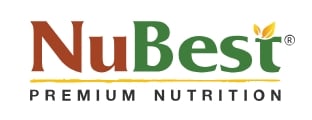GMOs and Bioengineered Food Labeling: What You Need to Know

The Difference Between a GMO, Bioengineered Product, and Non-GMO
A GMO is a genetically modified organism, meaning a plant, animal, microorganism, or other organism.
The term GMO is being replaced in the marketplace by the term "Bioengineered" as in the United States, beginning in 2022, retail food products containing or produced with the help of GMOs were required to be labeled bioengineered in words, a symbol, or links that convey the information.
GMO is still the most familiar term in the world marketplace and will be used in this article. A GMO has had its genetic makeup modified using genetic engineering in a way that does not occur naturally. GMO food is produced from or with the help of a GMO.
A non-GMO product is produced without genetic modification.
The Main Concerns with GMOs and Bioengineered Products
While manipulating foods' genetics is not new, traditional crop and animal breeding has been practiced since the early domestication of crops and livestock. However, traditional breeding and crossbreeding methods use natural reproduction to transfer desirable traits to the offspring. Natural breeding techniques are usually slower, given the nature of crop growing seasons and animal generation times.
With modern genetic engineering techniques, changes can happen virtually immediately, and there are much greater manipulation options, including moving genes within or between species. The movement of genes between species is of the most significant concern.
The process involves the following.
- Identification of an organism containing the desired gene—this can be from a plant, animal, or microorganism.
- Isolation of the desired gene from that organism
- The creation of a modified genetic sequence that can be inserted into another organism, usually a bacteria, so that it can produce multiple copies of the gene sequence
- Insertion of the copies of the desired gene sequence into the organism to be modified, using either a particle (gene) gun or a biological agent (e.g., a virus)
- Multiplication of the modified plants
The modification made to a crop plant can either relate to a factor of the plant, which influences its food characteristics. For example, one of the first GMO foods was the FlavrSavr tomato, developed by Celgene. When natural tomatoes ripen, a gene is triggered to produce a chemical that makes the fruit go soft and eventually rot. By modifying this gene, the FlavrSavr tomato has a longer shelf life and firmer fruit.
GMOs are produced to promote disease resistance, rapid or larger growth, resistance to damage, or to enhance nutritional quality. However, the big argument for the genetic engineering of food is that while the world population continues to expand, the land available for food production is finite.
Therefore, food production must be increased if the world's population grows. So, proponents of GMO foods argue that without their use, there will not be enough good to meet the demands of future populations.
This argument has some validity, but current techniques cannot expand production significantly, and the reality is that the primary reason for GMO foods is to generate profits for large corporations seeking greater profits.
Proponents also argue that the development of crops with enhanced resistance to weeds, pests, or diseases will lead to a reduction in the use of pesticide chemicals. The reality is that farmers who grow GMO crops use more pesticides and herbicides, not less. For example, Monsanto created Roundup-Ready (RR) soy, corn, and cotton seeds so farmers would continue to buy Roundup, the company's best-selling chemical weed killer (herbicide).
However, data, such as an evaluation of more than 8,000 university-based field trials, showed that farmers who plant RR soy seeds use two to five times more herbicide than traditional weed-control methods. There is also a concern that higher pesticide use by growing GMO crops could lead to insects developing super resistance requiring even higher levels of pesticide or producing "superbugs" that are resistant.
Some concerns against GMOs are that disrupting a natural organism to create a GMO could have disastrous effects on nature, the environment, or human health. And now, there needs to be more scientific data on the long-term safety of GMO foods, even though they are widely available.
One of the biggest concerns is that GMO foods may cause unexpected health consequences that may take years to develop. Genes from genetically modified plants have already been shown to be capable of escaping into the environment and contaminating natural crops. Corn is the best example of this problem as a single GMO corn plant can produce more than two million pollen grains that can be carried by wind to more than a half-mile away to contaminate the natural species of the crop to create all species of the corn growing near the become a GMO version.
There is also the possibility that manipulating genetic material changes the expression of proteins and antigens in foods – a situation that could lead to allergic reactions or other issues.
How to Find Non-GMO Foods
First of all, not all crops have been bioengineered (as of yet). But in the United States, most of the GMO versions that have been produced have become the dominant form in the marketplace. Here is the market share of the GMO versions:
- Sugar beet 99.9% GMO
- Canola 95% GMO
- Soybean 94% GMO
- Corn 92% GMO
- Cottonseed 94% GMO
Many of these GMO crops are used to make common ingredients in prepared foods, such as corn starch, corn syrup, corn oil, sugar from sugar beets, canola oil, and soybean oil. And keep in mind that more than 95% of the animals used for meat and dairy in the United States are fed GMO crops.
The most well-recognized Non-GMO certification organization is the Non-GMO Project. Products bearing this organization's butterfly symbol have long been a feature of health food stores and are now becoming increasingly popular in more mainstream retail outlets.
Products ranging from dietary supplement, dairy products and their plant-based alternatives, baby food, and a wide range of grocery products are examples of a growing number of certified non-GMO products on the marketplace.
References:
- https://www.ams.usda.gov/
- https://www.centerforfoodsafety.org/issues/311/ge-foods/myths-and-realities-of-ge-crops#
- https://www.nongmoproject.org/#
DISCLAIMER:This Wellness Hub does not intend to provide diagnosis...
















































































 Table of Contents
Table of Contents















